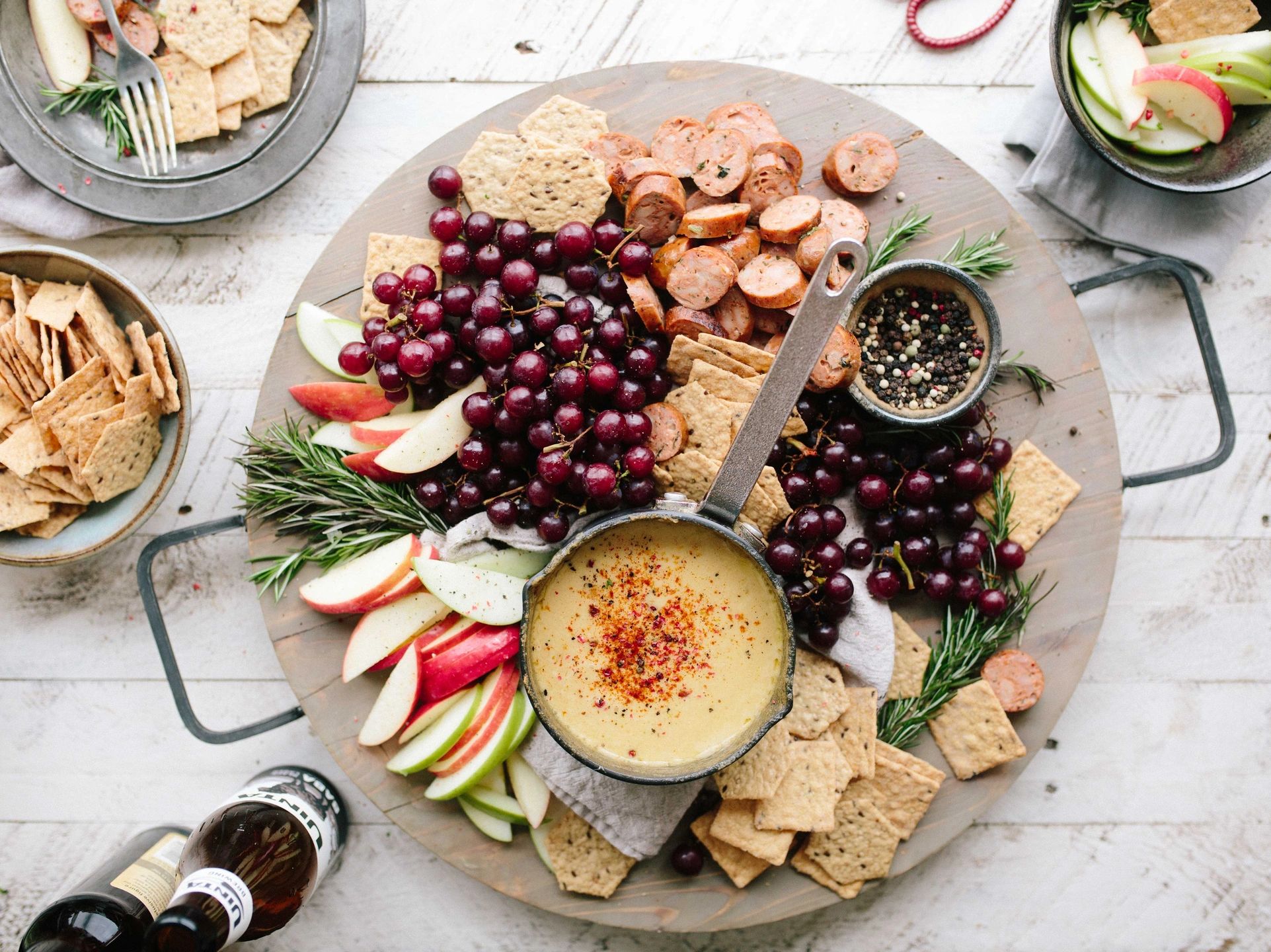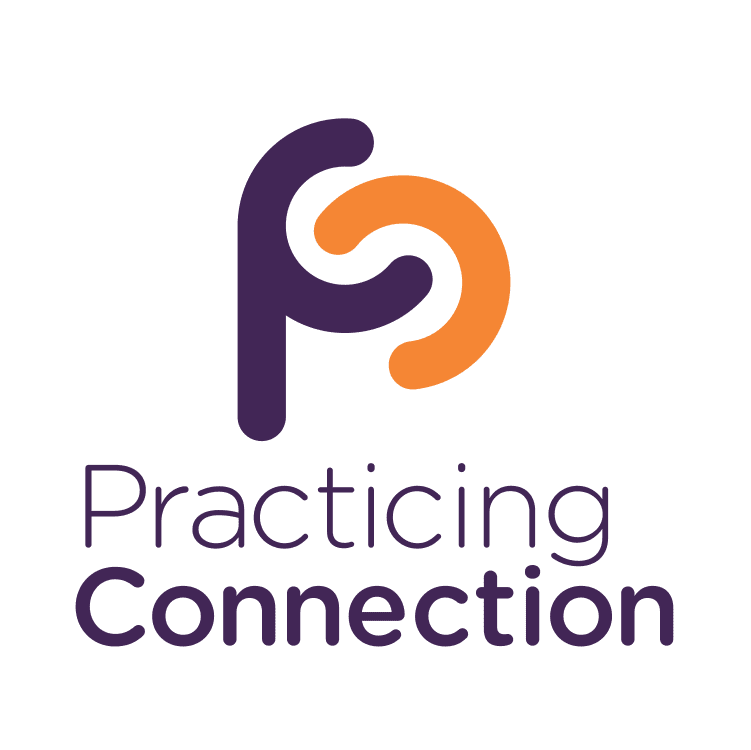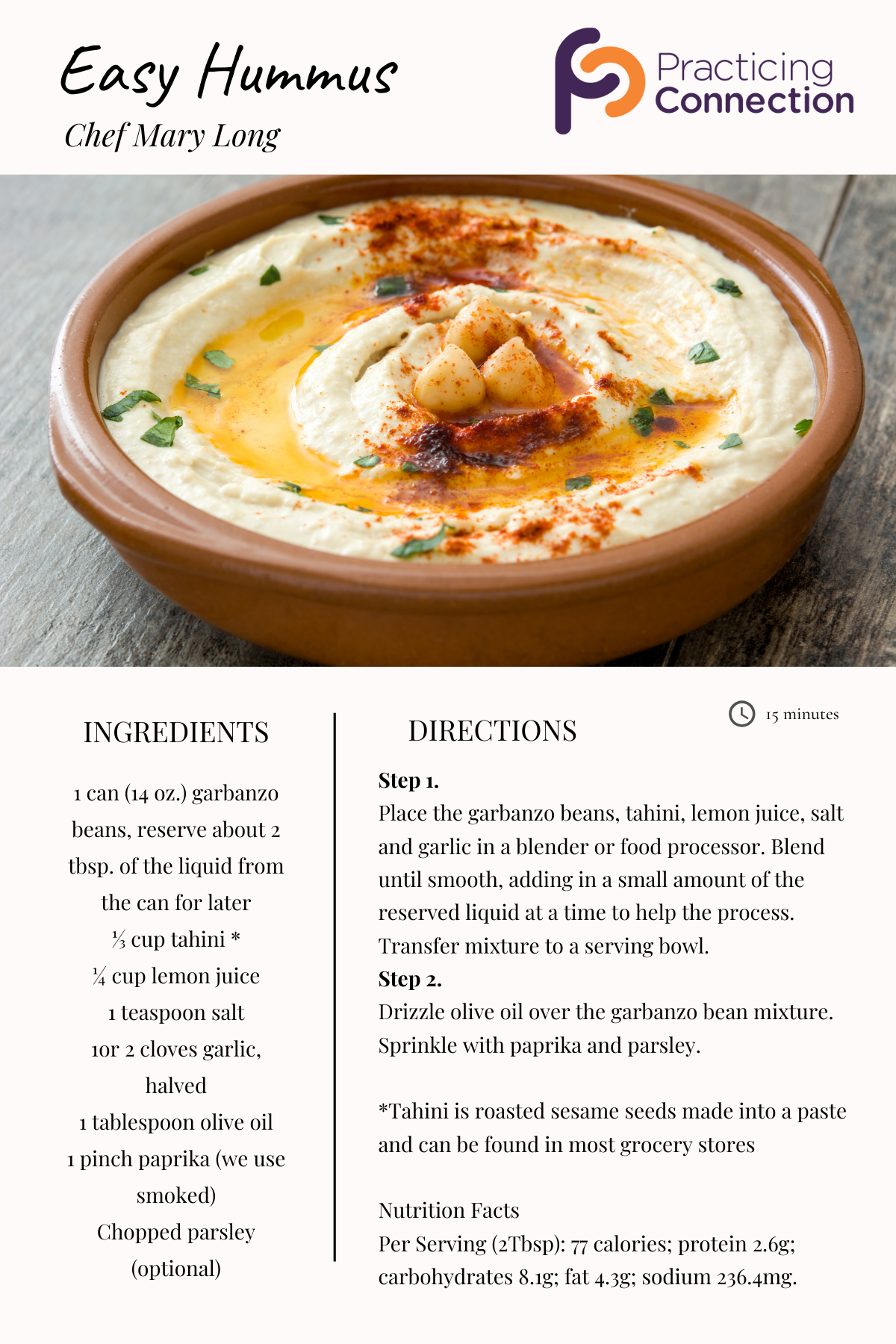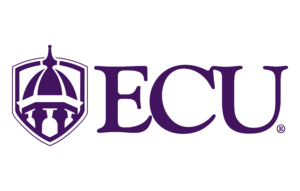JESSICA BECKENDORF: [00:00:00] Hello, welcome to the Practicing Connection Podcast. I’m Jessica Beckendorf, and I’m so excited today to be working with a guest, co-host and incredible OneOp colleague, Bethany Daugherty. Welcome to Practicing Connection Bethany, would you mind introducing yourself? Because this is your first time on the show, period!
BETHANY DAUGHERTY: Hey Jessica. Thank you. Yes, it is my first time on the show. I’m so happy to be here. My name’s Bethany DoDaughertyherty and I’m a program coordinator for OneOp. I work with the nutrition and wellness collaboration team, and we work on providing professional development opportunities for military connected registered dieticians, health educators, public health professionals, and extension educators.
So I’m happy to be here.
JESSICA BECKENDORF: Well welcome again here and we have you all the way as a co-host. We didn’t even have you on as a guest first, but that’s coming soon, I hope. [00:01:00] Our guest today is Chef Mary Long. Mary is a chef and instructor of Culinary Health and Resiliency at the US Army North Vogel Resiliency Center at Fort Sam Houston.
She’s a classically trained chef and graduate of the Culinary Institute of San Antonio, where she received her BS in Culinary Management. How many times can I mess up the word culinary? (laughs) Mary is also the liaison and coordinator for the Food Insecurity Project at Joint Base San Antonio with the San Antonio Food Bank.
BETHANY DAUGHERTY: And for those listeners who maybe don’t know, OneOp has a large food and nutrition security content library that we’ve been curating over the last few years, and I was introduced to Chef Mary through a webinar she recently presented for OneOp on her food security work at Joint Base San Antonio. Mary teaches a variety of cooking classes at the Vogel Resiliency Center to service members and their [00:02:00] families on the topics of heart healthy cooking, instant pot classes, anti-inflammatory cooking, and mindful meals, and many more that Mary will tell us about today.
And the goal of the Teaching Kitchen is to make connections through organized classes with mindfulness and nutrition focused outcomes. Hi Mary. Thanks for joining us for Practicing Connection Today.
CHEF MARY LONG: Thank you so much Bethany. I am so excited to join you both here today, and thank you for inviting me to the discussion.
JESSICA BECKENDORF: And before we begin, can you clear up, is it culinary, culinary, culinary? (tries different pronunciations)
CHEF MARY LONG: You know, I have heard all three. Traditionally just in school and all, we said “cue-linary.”
JESSICA BECKENDORF: Yes, “cue-linary.” Okay.
CHEF MARY LONG: I accept all.
JESSICA BECKENDORF: Yeah, I think I said it all three of those ways actually.
BETHANY DAUGHERTY: That’s really good to know, yeah. I have so enjoyed getting to know you over the last few [00:03:00] months as we prepared for the webinar and just am in awe of the work that you’re doing. It’s so interesting and so impactful, so the audience can get to know you better. Can you tell us a little bit about yourself and your background and how that’s prepared you for the work that you do?
CHEF MARY LONG: Sure. I did grow up here in San Antonio, Texas, and as I grew up, I lived near three of the five military bases that were part of the local military community before Joint Base was formed. And my love for cooking and sharing with others about how to make a meal stretch. And how to cook, just basic cooking skills was embraced and sought after by the young military families with children that I was serving when I was also a daycare worker and then daycare director outside of Lackland Air Force Base in the 1990s.
So as I continued to raise my own family and then volunteer with organizations, such as [00:04:00] Meals on Wheels with the San Antonio Food Bank and also Angel Food Ministries, this was a ministry that had food boxes that people could buy for about half the cost of what they would receive in the grocery store.
And I would make healthy recipes to help them along because sometimes some of the items enclosed in those boxes were a little different and they weren’t too sure of what to do with them. And so just organically the experience occurred where we would have cooking sessions there at the preschool, and not only were they able to learn some new ideas on what to do with that, but there was a connection that was made even then with some of the spouses whose.
You know, their military member was deployed at the time, and so we just had that time of family and connection over a meal. Even then, those experiences along with my culinary background as a chef and trainer for both Kroger and Colorado, and then the HEB corporation in Texas [00:05:00] both allowed me. To share with the customers and the students ways to make healthy meal choices, as well as understanding that the food cost and the ability to cook may be barriers for some of them.
BETHANY DAUGHERTY: Can you tell us a little bit about Joint Base San Antonio and the Vogel Resiliency Center?
CHEF MARY LONG: Definitely. The Vogel opened as the Vogel Resiliency Center in 2018, and it was created to provide a health and wellness program for Joint Base San Antonio and the community. We empower individuals, families, and organizations by exploring both mind, body and spirit lifestyle changes through our partners, and we do have several partners that are in-house. We serve active duty dependents, retirees, and all department of defense civilians as well, and there’s also guard and reserve members of course, as well. All of our services are provided without [00:06:00] a fee.
And the resiliency kitchen, which is where I get to have the opportunity to offer the hands-on culinary classes and team building experiences that we offer that really enhance also life skills. As Jessica mentioned, I’m also the coordinator and liaison with the San Antonio Food Bank for the Food Insecurity Project at JBSA, Fort Sam Houston.
JESSICA BECKENDORF: I am curious about some of the things you mentioned that in those boxes that people would get that were a little bit different and you had to show them what they could do with those items. Do you have an example of an item that is often maybe donated in boxes like that and people are like, “What? What do I do with this?”
CHEF MARY LONG: Sure. I mean, it was something even as simple as maybe a protein they weren’t used to, but one example that comes to mind was chickpeas, or garbanzo beans. There were a lot of folks that, when we had that come in, sometimes in the canned goods, things like that, that they didn’t [00:07:00] know what to do with that.
They weren’t familiar with it in the culture and time that they experienced cooking, maybe from, you know, their time growing up. And so it wasn’t a part of what they considered a food that would be open for their family to try. So that’s where creating that meal, creating a snack with the items in hand, right there on hand, allowed them to try it so that it, they wouldn’t go home and basically either not do anything with it at all or just give it away. And we wanted to create a time for them where they were receiving these items because there wasn’t a choice. It was like, here’s the box where they felt successful in, in going home and having food to serve their family. And a lot of it was just education on those things like that. But it, some things it was, they might be familiar with the item, but they just didn’t know how to cook with it. They didn’t know how to prepare it. So it was a balance of those things. [00:08:00]
JESSICA BECKENDORF: Or like maybe beyond like the box instructions, if there, if it’s in a box or whatever, but where you could do so much more with it. I imagine.
CHEF MARY LONG: Right. Some of those items because the way they were packaged, they were pulled apart from the packaging that they originally came in. So there might not even be cooking instructions on the box or the items ’cause they were separated into smaller packaging.
So it could even be just an education piece of, “Okay, they’ve given me this piece of meat or this thing, what do I do with it? You know, I don’t know how to debone and cut up a whole chicken.” Even something as simple as that. “I’m used to buying the chicken in pieces at the grocery store. How do I cut up this chicken, and prepare it correctly.” So yeah.
JESSICA BECKENDORF: I’ll be honest, I don’t know how to cut up a whole chicken. Luckily my spouse does, so this is a good, great segue into learning more about the cooking classes that you teach at the Resiliency Center. So could you tell us a little bit more about those and why it’s so valuable to teach these classes?
You’ve already kind of given a couple of examples of why it’s valuable, but [00:09:00] love to hear a little bit more about those classes.
CHEF MARY LONG: Sure. Well, we do offer a variety of hands-on cooking cleanses. As you mentioned, there’s an opportunity for those that are interested in learning basic culinary skills as well as for those who are seeking to learn more about new culinary skill sets, whether it’s baking or healthy eating options.
And these are all classes that are open to the general public so they can. Take a class like Instapot Cooking or Heart Healthy Recipes 101. We do have a plant-based cooking class that was actually grown out of interest from students that I had that were attending maybe the heart healthy classes, and they wanted to really expand their knowledge on what whole food cooking could look like.
And so this is not a vegan class because we might still use eggs or cheese, and other things like that. But it does give an opportunity for them [00:10:00] to have that cooking. We also offer classes like Baking 101 and Anti-Inflammatory Cooking for Life. The meal prep class that I offer is very popular, as well as cooking on a budget, which gives folks not only quick and easy recipe ideas, but also ways to really look at how to change it up a little bit.
Whether we are looking at buying that cheese now in bulk rather than shredded cheese, and we actually shred cheese on hand because some folks have never shredded cheese. So it’s another way to introduce the skill set along with the idea kids get to join in. We have kids and parents cooking classes that I offer as well as specialized classes for single soldiers.
Who may live in the barracks and I’m currently working on a class to offer things like knife skills 101 as well as an intermediate kids class that older children and teens that are interested in culinary can attend as well.
JESSICA BECKENDORF: [00:11:00] That is such a great variety. I’d love to hear about your participants. What surprises them? What stories do you have that illustrate the power of this work?
Because we’ve talked a little bit offline and I know that there’s some powerful stories that you have. I think, you know, when you have such a variety, there’s a reason for that variety of classes and so yeah, let’s hear a little bit about that.
CHEF MARY LONG: Sure. A part of what I offer as well are collaborations that I have with some of our entities that really came about from the beginning, and one of them was with. Our outpatient rehabilitation class. That’s through the cardiology team at Brick Army Medical Center, and they have an eight week class where students come together and they’ve had some type of heart injury.
So they’re, they’ve either had heart surgery, a heart attack, and now they’re coming to this outpatient class to learn some new skills. And one of the things they get to do is come to the plant-based cooking 101 class at the Vogel. [00:12:00] And occasionally we’ve had some folks that have come, and sometimes they bring a spouse along and they’re not quite sure about all these changes they’ve cooked for a long time, or they’ve just lived for a long time, and maybe they’re looking at all the nos that they’ve heard.
And so one particular time I had a couple that came in and we were offering a plant-based chili recipe. And this was like Texas style chili, but without the beef or even turkey or any of that, not an animal protein. So we had lots of different beans, lots of spices. Lots of peppers and onions and all the good stuff.
But the husband kept giving his spouse the side eye when she chose the chili recipe to begin with. And then as they were creating it, and I’m saying things like, “Don’t forget, you’ve got tasting spoons. You’ve gotta taste this, so we gotta make sure it tastes right.” He just kept looking around and not happy at all to be creating Texas Chili without Texas beef in it. So we finally sat down for our meal and we’re all, you [00:13:00] know, I give him a few minutes, we’re tasting everything, we’re enjoying, and I hear him say, “I can’t believe this. We’re gonna have to make this for the kids. And we can’t tell them what it is that there’s no meat in it ’cause they’re never gonna believe this, but wow.”
And it was one of those moments where he realized, and he said at the end, “I didn’t think this was gonna be any good, but we can do this.” And so they’re cooking with the dash, no sodium, spices they’re creating with all these extra fresh vegetables and herbs and, and really getting to try out some new things because that’s kind of my motto in here, is, “What can we add to make it delicious and eye appealing and fun?”
Not all those things you might’ve heard from your health professional of what you can’t have because those are important. But what can we do to make this to where you’re gonna go home and embrace these changes and really go with it? And that was one fun story of that. I’ve also [00:14:00] just after the four years I’ve had working with, uh, building this culinary program is just sitting together and having a meal.
There’s something that they’ve created and the students have that sense of accomplishment, so they have that connection that they’ve made maybe with another spouse. Maybe they just got here to JBSA and they’ve made a couple of friends in the class. They find out something, maybe about a teammate.
When we’ve had a team building where I’ve heard conversations like, “I didn’t know you had kids, and you know, we’ve worked together.” But just something organically happens around the dinner table. This universal connection through food is what I’ve had the pleasure of guiding the military community through by offering these classes, because we give that space for community, but also for learning something new, whether it’s technique or just maybe finding out a new way to do something with that broccoli that they’ve steamed the heck out of for years and now they’ve learned how to roast it and this, the opportunities that we [00:15:00] have here is a way for people to just.
Meet them where they’re at, and then offer the opportunity and the space. It really is powerful. It’s really exciting.
JESSICA BECKENDORF: Yeah, and I feel like trying a new food or something that you’re skeptical of is a great way of kind of opening your mind a little. I know it seems like a small, simple thing, but it’s really a great way to kind of almost take on a new perspective.
I grew up when I was a kid, it was not the fault of my parents, but I was an incredibly picky eater. And I only wanted, you know, macaroni and cheese pizza. I don’t, and there was like a third thing on there that’s very typical, like I didn’t want very much. And I ended up marrying into a family where my husband’s family, like they had their entire backyard, was a garden.
And they, like, they grew all kinds of new and different things just for the joy of growing new and different things. And I’ve found that through experimentation, I think that’s a another kind of fun thing that, like you described in that [00:16:00] story with, you know, the spouse who came and was very skeptical and then he’s like, “Oh, whoa, meatless chili not only can be good, but we have to make this all the time.”
Like there’s something that just unlocks a little bit, I think when someone is open to that. I’m glad he tried it.
CHEF MARY LONG: I was kind of worried ’cause he certainly was not happy to be making that dish. Yeah, he was not happy. She chose that. I do allow everyone to, when they pair up or when they’re there, because each of the stations, we have five stations, so each one is making a different recipe.
So during a class. The students actually get to try at least four or five recipes because each of the stations is making something different. And then we played up on the education side where we have our tables and we sit down and have the meal together. So we’re getting to try all these different things together that were created by different groups.
And then after we’ve eaten for a little bit, I’ll say, “Okay. Did anyone add a little extra garlic? What did we do? You [00:17:00] know, maybe jazz it up a little differently, chefs. How did you guys handle that?” And then we talk through any of those changes that way. So if you have those recipes at home, no one says, “Well, mine doesn’t taste like that.”
And that gives them an opportunity to also shine when everybody’s giving back the feedback of how great. That dish is, and they really love how they did, you know, whatever they did to, to jazz it up. And sometimes they’ll have some extra peppers out or some extra things that they’ll say, “Chef, can I add a little extra this in?”
Or, “I see those that you have here those roasted bell peppers, can we throw that on top of the hummus?” And so we will, I’ll give them that, that leeway to make some changes and make it even better. That’s always fun too.
BETHANY DAUGHERTY: And I also love how you talked about people are often hearing the things they need to take away from their normal eating pattern, especially in the instance of someone who’s had a heart event and they’re being told a lot, you know, “Don’t eat this, don’t eat this. Reduce your sodium.” And to kind [00:18:00] of reverse that messaging of “Here’s all these wonderful things that you can have and here are ways that you can prepare them.”
It’s really empowering. People often feel really tied to a recipe. If they’re not an experienced cook, they think I have to follow this to a tea and be perfect with it, right? And to give that freedom of, you could make this how you want it to taste for you and, and it can still fit within the health goals that you have.
I think that’s really empowering.
CHEF MARY LONG: I had, one of my first students came in directly from a dietician class here in the, in our center, and she walked in and said, “Chef, I was told you cook and that you’re going to teach me how to cook because I just found out I have diabetes and I don’t know how to cook and I go out to eat.
But now I don’t trust these people to give me what I need to have and I don’t know what they put in a lot of my dishes. So we’re gonna work together on this.” And I was just, “All right. [00:19:00] Yes ma’am. Let’s do this.” So she’s jumped in and the last two years has come to pretty much every class I’ve held, and now calls herself my sous chef, which I’m like, yep, you are.
And she’s just the biggest advocate of standing up and sharing for yourself. What you need to do to make these things happen. And that helps a lot in the class because I don’t have to say, you know, okay, well remember, we still need to listen to your physician, because she is always very vocal about, “I come here and I learn, but I still, I took what my doctor had to say and then what chef showed me and put those things together. And now I’m able to cook at home and make sure I’m getting what I’m supposed to because I know what I’m putting in it when I cook it at home.”
And that’s been really great to see how she came in from one side of saying, I really don’t know what I’m doing, to now feeling very confident and even assisting others in the classroom.
BETHANY DAUGHERTY: Such a great healthcare community partnership where [00:20:00] someone can leave their physician’s office or their dietician’s office and be given some advice that’s really helpful and really important to their health. Not knowing how to put it into action. And so this, taking it a step further and getting the education and the experience to put it into action makes really impactful and meaningful health outcomes.
So I, I think a lot of dieticians will be interested in hearing this podcast and, and really appreciative of what you do. And I know from the webinar that you presented for one op that. We will link that webinar in the OneOp notes for those who might wanna go back and listen to that, that people are interested in recreating what you’re doing at Joint Base San Antonio, at their own installation or their own workplace, but maybe don’t have the facility or the funding to start that.
Can you recommend for those people in that situation, maybe one small way that they could start [00:21:00] bridging that gap between providing advice and then helping folks, putting it into action?
CHEF MARY LONG: Sure. So I think really, if you’re interested in starting some type of program to promote culinary health at your installation or workplace, one of the things I would suggest is really starting by sharing your desire with leadership and establishing specific goals that you want to accomplish for your clients so that you have that basic outline of what do we want to do? to start with.
And then from there, collaborating with others from myself, because I’m not a dietician or a nutritionist, I, from the beginning, collaborated with folks like Army Public Health nurses, in house dieticians that are here either at the Vogel or nearby. And then also being open to collaborate with other entities.
Maybe that may not seem so obvious, but that might have the same goals for their client’s health. So I work with the Soldier Recovery Unit. I also have some [00:22:00] collaboration with the Center for Intrepid. They have a group of Special Forces soldiers that come through once during their career and their very first day there together, they get to come in with me into the kitchen.
And it’s more of a time of getting to know one another and meal prep and connect than it is really techniques and learning any of that. But it’s a real important time for them and they really take a lot away from that because it’s their first opportunity to spend with one another. So just some of those things.
And whether you’re using a space such as a barracks or a USO kitchen to video or share live, you don’t need a full teaching kitchen like I have to demonstrate from, but I have taken my show on the road with a pressure cooker and an induction top to the barracks or to the Center for Intrepid, and I’m very happy also to answer any questions on how our program progressed.
If anyone wants to reach out to me further as well. But I really do recommend just starting from the beginning with some [00:23:00] specific basic goals on how you wanna get started and really collaborating and looking at ways to see if there are other health professionals that have the same sort of goals.
JESSICA BECKENDORF: I’m curious, Chef Mary, do you have partnerships with some local nonprofits or like County Department of Health and Human Service offices or anything like that?
CHEF MARY LONG: I do have a partnership with the San Antonio Food Bank through their Culinary Health for families. They offer this program to any individual that wants to be trained though, they work directly with us because we do have the San Antonio Food Distribution each month, and so that is one entity I have.
The folks from HEB Corporation have worked with us to offer not only funding because we don’t receive government funding for our food, but also ways that they can come assist for things like spouses events. Things that we might offer to our military members and our veterans that are here [00:24:00] on JBSA Fort Sam Houston.
But most of the collaborations I have are with entities that are here internal on JBSA, Fort Sam Houston that I work with for the most part. Well, and those are super important.
JESSICA BECKENDORF: Yeah. You should always be looking at that. I was just curious if you had some of those other relationships as well.
CHEF MARY LONG: So I am a part of the Food Policy Council for San Antonio, and that’s one of the things that I do kind of on my outside for myself, but also to represent our military members and our military community.
And it just happened that it was a part of something that I wanted to do, but as I was the only person that involved that worked with the military community, I kind of get to be the liaison and and representative for that as well. And that is a council that meets to discuss not only what’s happening in just the regular different economy of San Antonio with food, but also in food insecurity [00:25:00] and ways that we have projects such as gardening, projects that are happening throughout the city and different organizations that work closely with ensuring that our community is receiving food that’s healthy.
Children are able to have resources as well, whether it’s weekend food distributions for them. So it’s something that I do outside of my position. But that I also enjoy being a part of.
JESSICA BECKENDORF: Wonderful. I’m curious as to that involvement. I know it’s outside of your role. Do you feel like you’ve been able to help the other people on that council understand the need around military families and if you see like sort of a, there’s been a mutual benefit.
CHEF MARY LONG: It really has because we’ve had a lot of discussion and actual. Interesting collaboration to where we’re looking at some things where from the outside civilian organizations don’t necessarily understand that food [00:26:00] insecurity is something that is a possibility with our service members, because that isn’t something that has been highly discussed until very recently.
And so the work that’s happening there is we’re actually looking at ways to have some. Food distributions through organizations that we have. We have a group that they work closely with the American Heart Association in providing even senior citizens and senior citizen centers where they can come in and have food distribution and a food popup and they can pick out their own fresh produce.
And after listening to some information on heart health, they get a good portion of that. Produce free. And so that’s a collaboration that we’re working on right now. So that’s something that we might be able to give to our military families as well and have access to write off a post. And that would be another resource in a way to get some fresh, [00:27:00] healthy produce to our military members for free or for a lower price as well.
So that’s, those are collaborations that are happening too.
BETHANY DAUGHERTY: Food insecurity is such a multifaceted issue that those relationship building skills and the ability to develop those collaborations with not only the clients that you serve, but the people on post and the organizations off posts are just so important to addressing it from a multifaceted way.
Mary, I’m just curious, have you learned any lessons or have any tidbits that you wanna share with the audience about developing those relationships and really fostering those collaborations to make your program so impactful?
CHEF MARY LONG: Well, I know that one of the things right from the beginning that I learned was that those collaborations were not only impactful to the clients and the students that I have that join me in the classroom, but also just [00:28:00] to be an helpful to open a wider lens of what these folks bring to the table with the resources that they have. From the beginning, I had the Army public health nurse team that would come in and share community resources such as River City Produce that we have in San Antonio that is a produce depot, and they offer the ability for you to come in and get a nice commodity of produce at a nice price for groups to get together.
And so I’ll see on the spouse’s page now that we’ve shared these resources where spouses are getting together and saying, “Come by my house. I have all these strawberries that I got, you know, a pallet, you know, or a case of for this much money, and I’m willing to share.”
Or going across the street to the other resource of Cheecha Boys, which has double SNAP benefits. So if you go and buy the produce there, you get double your bucks for fresh fruits and vegetables. And really offering those collaborative efforts from the beginning [00:29:00] opened up the ability to have the class, not just be on the culinary skill set, but offering those other parts of the collaboration.
Those other folks that are joining in, such as the dieticians from the pediatric team that come to my kids’ class and they bring in the resources for picky eaters. And I have parents that said, “I just never thought of, you know, looking at it from this side, whether it’s the kids saying, ‘you know what? I have a little bit of control about what I can eat, and so I’m gonna hold my stance here.’”
But giving them some ideas on how to bring ’em around and having them at the table with their parents has been fun to see where they’re cutting up with their little knife, you know, their little plastic knife, their veggies, and throwing it in the pot, and how that helps them come to try those recipes. So it’s been definitely a great learning experience for myself in building this program and seeing how.
Each of these collaborations has just opened up [00:30:00] the door for even something else, whether it’s the collaboration with cardiology, moving into the opportunity for the pain clinic to jump on board, because now they’ve heard that, wait, my clients can come and create a plant-based meal and learn. How that is going to be successful at their house.
And so I think both sides of the coin we both have, uh, benefited because they’re really going beyond just handing off the information to having clients that are able to come in and really create and be successful too. And also for myself to have those professionals come into the kitchen with their knowledge base and share has been definitely a benefit as well.
In these last four years, it’s been a lot of growth, a lot of change, and it’s been very good.
JESSICA BECKENDORF: Oh, that’s awesome. Well, I’m gonna kind of switch gears a little bit because we are talking about food and I am getting hungry. I would love it if [00:31:00] you would be willing to walk us through a popular recipe in the classes you teach and share a little bit about why it’s popular.
CHEF MARY LONG: Sure. Well, I know I mentioned at the beginning about the chickpeas and the hummus from back in the day, and that’s still a really fun and easy recipe that kind of moves its way through a variety of classes because hummus is something that is actually created. Many different culture cuisines in different ways.
So one that we make quite often, and it’s really popular because number one, it’s very inexpensive to make and it’s very tasty. And if you go into the grocery store and see the 60 varieties of hummus, you can look along that and go, “Wow, I don’t know where to begin.
JESSICA BECKENDORF: The prices.
CHEF MARY LONG: Yeah. And sometimes they’re a little bit pricey and folks just really don’t know how quick and easy it is to make.
So we just have a small little food processor, or you can have a personal blender, like one of those bullets [00:32:00] we use that in the classroom and it’s just a simple recipe. We just take a can of garbanzo beans, which in other parts of the world are known as chickpeas. They’re the exact same thing, and those are just a power source on their own.
So they make it into the plant-based class. They go into our flatbreads and hummus from around the world class as well as the heart healthy class. And I’ve even had ’em tossed into the kids’ class. So those chickpeas or garbanzo beans, they’ve got a great amount of protein and fiber, which makes you feel like you are full longer.
They also have a complex source of carbs. Lower impact on your glucose. So when you’re looking at all those fun things too, then tahini, which is sesame seeds, and they just take those sesame seeds and roast ’em down into a paste. It’s what’s creamy and very high in antioxidants and vitamins. [00:33:00] And it also has a great amount of protein and fiber.
So you can find tahini in most grocery stores. They’re actually on the peanut butter aisle or on what some stores will have the international aisle. That’s another ingredient in there.
JESSICA BECKENDORF: I was just gonna say it’s like peanut butter, but instead of being made with peanuts, it’s made with sesame seeds.
CHEF MARY LONG: It looks like, if you’ve ever seen natural peanut butter where it looks like it has a little bit of the oil on top separated, that’s what it’ll look like too. You can find it in a lot of dressings like salad dressings as well. It’s going to be that savory, creamy ingredient in a lot of those as well. To that, we add a little bit of lemon juice.
Sometimes we add fresh lemon juice. Sometimes I’ll have the bottled on hand, so it’s either that or a couple of cloves of garlic to taste. If you’re not a big garlic fan, you can just put in one or just a little dash of garlic powder, and then we add in our classes. Most of the time we add. One of the dash products, which is the no sodium, but you can also toss [00:34:00] in salt if you like it.
Just a little taste of salt. And then we like to use a pinch of smoked paprika that gives it kind of that nice savory in there as well. A drizzle of olive oil. And you’re set. Now, the fun thing is when I have our chefs, our students in the kitchen preparing this, at the end of the day, if they really wanna get creative, I’ll have them split the recipe in half.
So they’re getting to taste it as it’s made. And then those that really want to can do some things with the others. So I’ll usually have some olives on hand or some roasted peppers or some seeds like either roasted pumpkin seeds or sunflower seeds on hand so they can kind of drizzle and play with it and, and make it their own.
And not only does that give us some other flavor choices at the end of the day, but it also gave them some autonomy to, to really make something their own. Hummus is probably one of the favorites in the classes and it’s something I’ll pull out too if we ever have something where we have some visitors come by [00:35:00] that takes maybe a couple of minutes to make and all things that are shelf stable.
So it’s something you can keep in the pantry and just pull out if you have unexpected guests just to put together. And I’ll be glad to share the quick and easy hummus recipe with you guys as well.
JESSICA BECKENDORF: Yeah, we’ll make sure to have that as part of the show notes, and thank you so much for sharing that with us.
I’m curious if anyone looks at chickpeas or garbanzo beans and says, I don’t know about this.
CHEF MARY LONG: Yeah. Yeah. All the time. I’ve had folks that have never tried it, and they’re still not sure they’re going to. But usually in the class setting, and I kind of open it up and just say, “Did anybody who had, you know, at the beginning of class that said they had never tried it, did you go ahead and try it?”
I’m not trying to make anybody try something that they really don’t want to. And usually folks say either one or two things. “I never liked it before and I really like this one,” or, “I haven’t tried it ’cause I wasn’t sure about this and now [00:36:00] I like it.” So there’s still some folks that are like, “I’m still not sure about texture,” and things like that.
But for the most part it’s a thumbs up. And the thing I forgot to mention that’s even best about this is how inexpensive it is to make, it really is a little, you know, even with today’s prices in the grocery store, just maybe a dollar and a half to put this whole thing together. So very economical, really flavorful, and you can definitely go many different ways to make it delicious and create it your way.
That’s the fun thing about creating at home. You get to jazz it up in your own style.
JESSICA BECKENDORF: Yeah, and my local grocery store, a small container of hummus, will be easily $5.99.
CHEF MARY LONG: Oh yeah.
JESSICA BECKENDORF: I would also imagine tahini is a new ingredient to a lot of people, but it’s also easy to purchase ’cause it’s in a jar next to the peanut butter, and once you’ve tried it, you’re like, “Oh, cool.”
CHEF MARY LONG: Yeah. And at the end of the day, I’ve had folks that said, “I didn’t have tahini on hand. I added a nut butter. Is that okay, chef?” And I’m like, [00:37:00] did it taste good? Let’s go. So it’s really, you know, there’s all different ways to make it and. If it’s not something, you know, there’s sometimes there’s folks that are more of a food desert and they don’t have the variety in their grocery store, definitely go with it.
You can definitely throw in something else. There’s also recipes out there that do not even call for tahini, so keep that in mind. That’s not an end all. Or garbanzo beans. I’ve made hummus with edamame.
JESSICA BECKENDORF: Black beans!
CHEF MARY LONG: Or black beans! We were talking about that the other day. Black beans. There’s lots of different ways to put together a delicious hummus.
It doesn’t have to be garbanzo beans. Definitely.
BETHANY DAUGHERTY: Awesome. Thanks Chef Mary. These are such great ideas and such a great recipe that people can really make their own. And I’ll add, I’ve made hummus with my kids several times and it’s just a great, easy, inexpensive recipe that you can get the kids involved.
And then you can also get ’em to eat some more veggies ’cause they can dip their veggies in the hummus. And then [00:38:00] it’s a win for, for mom and dad too.
CHEF MARY LONG: Definitely.
BETHANY DAUGHERTY: So Mary, we’d like to end the Practicing Connection Podcast with the guest, sharing a personal practice that helps with readiness and resilience.
So would you mind sharing a personal practice that helps you with your own readiness and resilience?
CHEF MARY LONG: Sure. One of the first practices that I established and was really as I began working here at the Vogel Resiliency Center with one of my coworkers, and she introduced me to this, and it’s been wonderful to now share with different classes in our program, including that mindfulness class that we do for meal prep is what we call a breath anchoring exercise for mindfulness.
So something as simple as a warm cup of tea in my hands. I sit with my hands wrapped around the mug, focused on a mindful experience. It is really being present, focused and in the [00:39:00] moment without judgment. And that’s sometimes difficult to not have judgment.
‘Cause you know, our minds will be wandering, but that’s where that cup of tea really is that anchor. Because as I focus on my breathing and I sip the tea, I can use that warm cup in my hands as the anchor to bring any strain thoughts that might come back. In my head, back to my breath, and that quiet moment I’m giving myself, and I found that having that anchor or object helps me refocus and stay present.
But it could be something as simple as washing your hands and focusing on the warm water, flowing over your hands as you rub together and wash them. Or even if you’re sitting in the parked car in your driveway. Taking intentional breaths before you head into your next event or maybe at the end of your day.
And so that’s been something that has been a very helpful and easy way for me to kind of stay [00:40:00] anchored and focused and in the moment when I’m trying to establish that type of a mindfulness moment that day.
BETHANY DAUGHERTY: Thank you for sharing that. That’s such a wise practice that will be helpful to many of the listeners.
Mary, thanks so much for joining us today. We really appreciate everything you’ve shared with us. I’ve really just enjoyed talking with you and getting to know you over the last few months. I. That’s it for this episode. Thanks for joining us. If you enjoyed this episode, click the share button in your podcast app to share it with a friend.
We’d love to hear what you’ve been thinking about and what’s inspiring you. You can share that with us by clicking the Send us a text message at the top of the description of this episode. If you are listening on a computer, you can email us at practicing connection@oneop.org. We can’t wait to hear from you.
JESSICA BECKENDORF: Thanks again to Chef Mary Long and Bethany Daugherty for joining us today. We’d also like to thank our co-producer, Coral Owen, our announcer Kaylyn Gobel, [00:41:00] Maggie Lucas, for their help with marketing and Nathan Grim who composed and performed all the music you hear on the podcast. We hope you’ll listen again soon.
Until then. Keep practicing.
CREDITS: The Practicing Connection podcast is a production of OneOp and is supported by the National Institute of Food and Agriculture, U. S. Department of Agriculture, and the Office of Military Family Readiness Policy, U. S. Department of Defense, under award number 2023-48770-41333.













